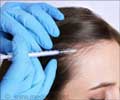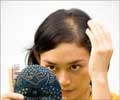Scientists create natural-looking hair that grows through the skin by using lab-engineered stem cells, a remarkable achievement that could revolutionize hair loss treatments and the hair growth industry.
Highlights:
- Scientists create natural-looking hair that grows through the skin by using lab-engineered stem cells, a major breakthrough that could revolutionize hair loss treatments and hair growth industry
- Over 80 million persons in the United States suffer from hair loss caused by various reasons including aging, childbirth, burn injuries, inherited conditions, cancer chemotherapy, and medical conditions such as alopecia
- Hair generated by stem cells in the current study looks natural and can be transplanted into humans suffering from hair loss and thereby improve their quality of life
Read More..
What are Induced Pluripotent Stem Cells?
- Pluripotent stem cells are a type of cells that have the ability to become any type of cell or tissue found in the human body
- Induced pluripotent stem cells (iPSCs) are a type of pluripotent stem cell that can be made from human adult cells such as fibroblasts found in the skin or peripheral blood mononuclear cells (PBMCs) by genetic engineering technology in stem cell labs
- Generation of iPSCs potentially creates an unlimited supply of any type of human tissue or cell that can be used for treatment and research purposes
- Induced pluripotent stem cells became widely popular since they are an alternative to embryonic stem cells which also have the ability to become any human cell type.
- Embryonic stem cells derived from frozen human embryos is considered unethical by many people
Growing Natural Looking Hair in the Lab
- First the study team used induced pluripotent stem cells to create a dermal papilla cell
- The dermal papilla cell is found within the hair follicle, and controls hair growth, including hair length and thickness, and growth cycle
- The protocol followed in this study used a combination of mouse hair follicular epithelial cells and human dermal papilla cells
- The tests were carried out in immunodeficient mice lacking body hair
- The process uses a 3D biodegradable scaffold made of dissolvable material
- The scaffold regulates the direction of hair growth and helps the stem cells get incorporated within the skin, which is a tough barrier
Alexey Terskikh, Ph.D., associate professor in Sanford Burnham Prebys' and also the co-founder and chief scientific officer of Stemson Therapeutics, said: "Our new protocol described today overcomes key technological challenges that kept our discovery from real-world use. Now we have a robust, highly controlled method for generating natural-looking hair that grows through the skin using an unlimited source of human iPSC-derived dermal papilla cells. This is a critical breakthrough in the development of cell-based hair-loss therapies and the regenerative medicine field."
In 2015, Terskikh managed to grow hair under mouse skin using dermal papilla-derived from human pluripotent stem cells, but the process was uncontrolled and needed more refinement, which they have achieved in their current research.
Scope of the Study & Ongoing Research
- Using the patient’s blood, iPSCs can be engineered which can be used to give an unlimited supply of the desired cell or tissue
- Generation of hair follicular epithelial cells (in this study mouse epithelial cells were used along with iPSC derived dermal papilla cells) from human iPSCs is presently ongoing in the study team’s lab
- Using human iPSC-derived both hair follicular epithelial as well as dermal papilla cells will help in the formation of completely human hair follicles, that can be transplanted into patients
In summary, induced pluripotent stem cells (iPSCs) can be used to create natural looking hair that can be used to treat patients struggling with hair loss, a breakthrough that could potentially change hair loss treatments.
References:
- Functional hair follicles grown from stem cells - (https://www.sbpdiscovery.org/press/functional-hair-follicles-grown-from-stem-cells)
- Why are pluripotent stem cells important? - (http://stemcell.childrenshospital.org/about-stem-cells/pluripotent-stem-cells-101/why-are-pluripotent-stem-cells-important/)
Source-Medindia















